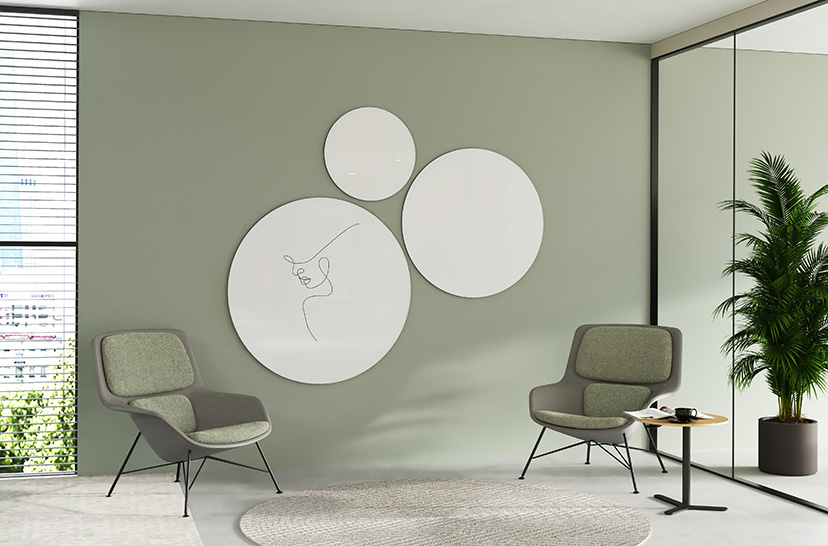The duel of creativity: Enamel whiteboards versus writable glass boards
In modern office and educational facility design, whiteboards and writable glass boards are common tools for brainstorming sessions, project planning, presentations, and note-taking. Although they may appear similar at first glance, each has unique characteristics that distinguish them and determine which is most suitable for various applications.
The most important similarity: quality
However, we start with an important similarity that must be mentioned. The lifespan of both products is excellent without distinction. Enamel whiteboard surfaces are heated to 800⁰ during production, creating a scratch-resistant top layer. This layer is so hard and smooth that ink from whiteboard markers has no chance to adhere. Glass has the same properties. Therefore, both Chameleon enamel whiteboards and Chameleon glass boards are perfectly writable and erasable for a lifetime. This is in contrast to foil and lacquered steel whiteboard surfaces, but that deserves its own blog.
The maintenance of glass boards and enamel whiteboards is comparable. They are dry erasable with a microfiber cloth. If dry erasing does not seem sufficient, a eraser spray or a damp cloth can be used to clean the boards perfectly.
Now onto the differences:
Whiteboards: The trusted ally
Writable glass boards: The elegant appearance
In recent years, writable, magnetic glass boards have gained ground in the world of modern offices. Their smooth, glossy surfaces exude a sense of sophistication and offer unique advantages.
- Color diversity: Glass boards are available in a wide range of colors. For instance, Chameleon has curated its own unique color palette of 18 colors that align with current interior design trends.
- Aesthetics: For many interior designers, glass boards have a more premium appearance than whiteboards. It should be noted that this is a matter of personal preference.
- No discoloration: Chameleon’s glass boards, unlike those of other providers, are not painted in color but enameled. As a result, the color is baked into the glass, ensuring they do not discolor in daylight throughout their lifespan (UV discoloration does not occur).



